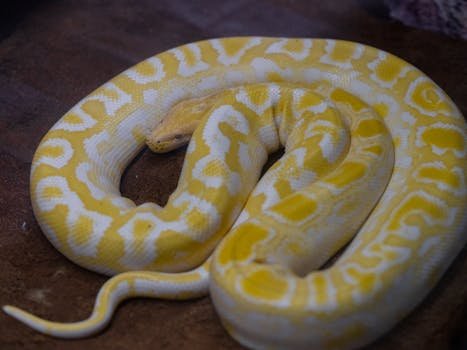To reveal the aggression in Boas: A comprehensive study

Boas, a species of large snake belonging to the Bidae family, has long fascinated humanity with their unique qualities. One aspect that often increases curiosity and sometimes fear is their perceived aggression. The question “How aggressive is Boas?” Is one who has been asked by many, from potential pet owners to curious naturists. This article aims to demystify this topic, deep deep into the Boas species and explore their levels of aggression.
The spectrum of aggression
It is important to note that Boa behavior, like any animal, is found in a spectrum. Some Boa’s may be relatively calm and docile, while others may show more aggressive trends. However, it is important to understand that the term “aggression” when used in animals often reflects a human perspective and may not exactly capture the motivations behind the animal’s behavior.
In reality, much of what we perceive as “aggression” in Boas is often rooted in defense or fear. Boas, like all snakes, are wild animals. They have evolved over millennia to respond to threats in ways that maximize their chances of survival. Therefore, a boa may have strike or rush if it feels threatened or corner, but this is not so much a display of aggression as it is an instinctive answer to the perceived danger.
The role of the environment
A Boa’s environment plays a significant role in its behavior. In nature, Boa’s lonely beings who spend much of their time hiding in caves or during vegetation to avoid predators. They are baked assasses who patiently wait for exchange to come within a marked distance instead of actively chasing it down. This naturally passive lifestyle can be contrasted with the more aggressive hunting methods used by other species.
In captivity, a Boa’s behavior can be affected by several factors such as enclosure size, temperature, humidity and handling frequency. A boa that is often handled can become more accustomed to human interaction and less likely to respond defensively. Conversely, a boa that is rarely handled or held in an unsuitable environment may be more prone to stress, which can result in defensive behavior.
The species factor
There are many different species of Boas, each with its own unique behavior and temperament. E.g. Common Boa Constrictor (Boa Constrictor Imperator) has a reputation for being relatively docile compared to other large snakes, making them popular in pet trade. On the other hand, Emerald Tree Boa (Corallus Caninus) is known for its more defensive nature.
It is also important to note that individual personalities are found in species. Just as some people are naturally more assertive or shy than others, are also some boa’s more defensive or relaxed. This individual variance is another reason why it is difficult to do broad generalizations about Boa aggression.

Understanding of “aggression”
To really understand Boa Aggression, we need to refresh our perspective. It’s not so much about aggression as it’s about communication. When a boa whispers or strikes out, it communicates its discomfort or fear. It tells us that it feels threatened and wants to stay alone.
In addition, we must remember that although Boas can deliver heavy bites, they are non-friendly and pose a small threat to people under normal circumstances. The key to reducing the perceived aggression in Boas lies in understanding their behavior and giving them an appropriate environment that minimizes stress.
FinallyAlthough Boas can show what we perceive as aggressive behavior in certain circumstances, this is often an answer to stress or fear rather than inherent aggression. By better understanding these magnificent beings and giving them the care they need, we can minimize such defensive behavior and create a more harmonious relationship between people and Boas.
https://www.youtube.com/watch?v=qb3klns2V-y
